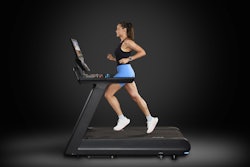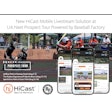SOURCE: National Athletic Trainers' Association (NATA)
DALLAS, December 11, 2018 – Winter is upon us and with it comes unique challenges for individuals engaged in sport-related physical activity in cold, wet or windy conditions. Injuries that are prevalent in warm weather, such as strains and sprains, can become even more pronounced in cold weather if measures – such as proper warm-ups – aren’t taken. Additionally, cold environmental injuries such as hypothermia, immersion foot and frostbite enter into the mix. Moreover, the cold can have a chilling effect on muscles and joints. This includes decreased range of motion, increased tightness and stiffness, decreased reaction time and reduced circulation to extremities and skin surface.
Below are five tips provided by the National Athletic Trainers’ Association (NATA) to prevent general and cold environmental injuries.
- Know the Weather Conditions. Get an accurate temperature by looking at the “real feel” and “wind chill” instead of the base temperature, and modify activity in high-risk conditions to prevent cold injury.
- Drink Water. Stay hydrated with water or sports drinks and eat a well-balanced diet. Generally, athletes are less aware of hydration during the winter, but water is a key element in maintaining a safe body temperature.
- Dress in Layers. Dress in clothes that can be adjusted with changes in the weather and wear insulated clothing that allows moisture and sweat to evaporate. If your warm-up is inside and your clothes are damp or wet, make sure to change into dry clothes before going outside as moisture from sweat will result in cooler body temperature and increase the risk of cold injuries.
- Combat Mother Nature. Use outdoor heaters when needed and take regular indoor breaks, especially if it’s windy with a low wind chill temperature.
- Know Additional Risk Factors. Athletes who are young, female, seniors, African-American or have diabetes should take extra precaution as they are at a greater risk of cold weather injuries.
The best way to ensure cold weather safety is to know the risks, exercise precaution and consult with a trained medical professional – such as a physician or athletic trainer – who can help prevent, diagnose and treat injuries. For more information about athletic trainers visit nata.org.
About NATA: National Athletic Trainers’ Association (NATA) – Health Care for Life & Sport
Athletic trainers are health care professionals who specialize in the prevention, diagnosis, treatment and rehabilitation of injuries and sport-related illnesses. They prevent and treat chronic musculoskeletal injuries from sports, physical and occupational activity, and provide immediate care for acute injuries. Athletic trainers offer a continuum of care that is unparalleled in health care. The National Athletic Trainers' Association represents and supports 45,000 members of the athletic training profession. For more information, visit www.nata.org. At Your Own Risk is NATA’s public awareness campaign designed to educate, provide resources and equip the public to act and advocate for safety in work, life and sport. In an effort to provide comprehensive information, the association has launched a website that provides recommendations on keeping student athletes and communities active and employees safe on the job. VisitAtYourOwnRisk.org.































